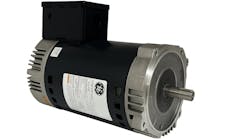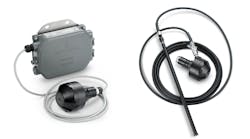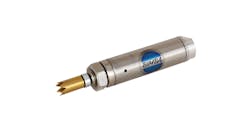Innumerable products made throughout the world incorporate hole punch technology in their packaging. Anything that can be bagged has the potential to be hole-punched. For example, bags of candy have a hole punch at the top of the packaging so they can slide on to store displays.
If you’re involved with packaging, you should be aware of the utility of pneumatic hole punch cylinders. In hole-punching applications, speed and efficiency are key. With precision engineering the razor sharp cutter can punch millions of holes in thin sheets of plastic film without sacrificing quality or losing speed.
Air cylinder speed is largely determined by the flow of air into the cylinder. The greater the air flow, the higher the speed. Since these are punching thin sheets of plastic, not a lot of force is required so a smaller bore size is sufficient. However, you will need a generous port size in order to get maximum flow. The ideal size for a hole punch cylinder would be a ¾ inch bore, one-inch stroke, and 1/8 NPT port.
Quality and efficiency will come from how the application handles the product waste and multiple cycles. So, use hole punch cylinders that employ hollow carbon steel rods. These provide an air jet through the rod that will eject the cut-out slugs every cycle, preventing clogging and minimizing cleanup. To extend the life of each cylinder, especially when working on high speed, high cycle applications, find cylinders that offer nickel-plated steel rod guides. They are less susceptible to fatigue than comparable aluminum caps.
Finally, prepare for the time when a cutter starts to lose its edge. You’ll want to have one that is easily removable to avoid losing time or money on undesirable cuts.
For more information, contact www.bimba.com.










